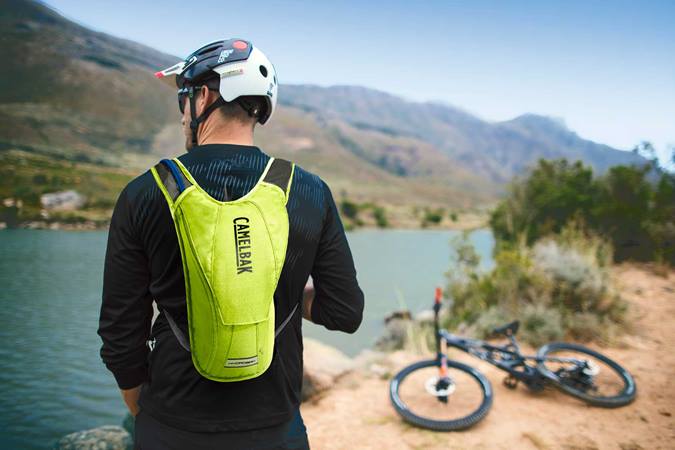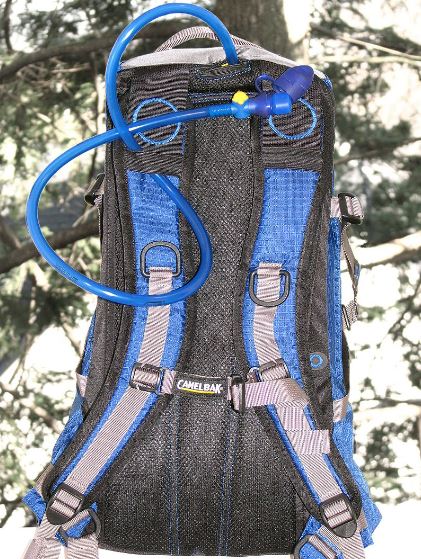Preventing Mold in Hydration Packs: Essential Tips for Cyclists

Key Point Summary of Preventing Mold in Hydration Packs:
- Preventing Mold: The best way to deal with mold is to prevent it from growing in the first place. This involves regular cleaning and thorough drying of your hydration pack.
- Cleaning Tips: Use a mixture of hot water and baking soda or a specialized cleaning solution. Brushes and cleaning kits designed for hydration packs are also helpful.
- Pack Hygiene: Store your hydration pack in a dry, ventilated area. Avoid leaving water or sports drink in the bladder for extended periods.
As a masters cyclist who has spent countless hours racing and riding mountain bikes, gravel bikes, and cyclocross bikes, I’ve learned a thing or two about the importance of staying hydrated – and the pesky issue of mold in hydration packs. For beginners and mid-level cyclists, understanding how to prevent and deal with mold in your hydration pack is crucial for both health and convenience. Here’s what I’ve learned over the years, distilled into a handy guide.
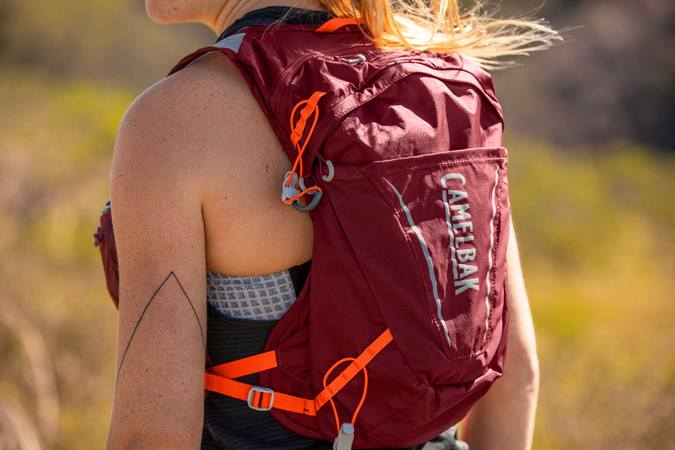
Preventing Mold from Taking Hold
The first line of defense against mold is prevention. Mold thrives in moist environments, and a hydration pack is often a perfect breeding ground if left unchecked. After each ride, I make sure to empty my hydration pack completely. It’s tempting to just toss it in the corner after a long ride, but trust me, taking a few extra minutes to empty it will save you a lot of hassle down the road.
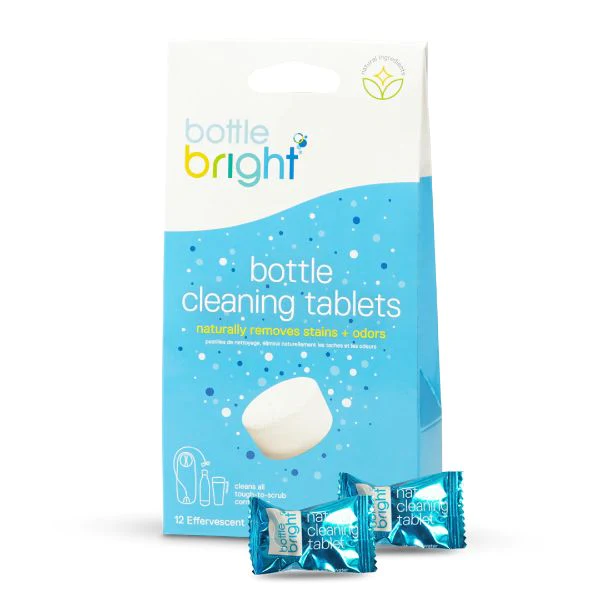
Cleaning Tips for a Fresh Hydration Pack
Regular cleaning is key. I learned this the hard way after discovering a particularly nasty mold bloom in my pack after a week-long cycling trip in humid conditions. I recommend a weekly cleaning routine if you’re using the pack frequently. Here’s what works for me:
- Baking Soda and Hot Water: This is a simple and effective cleaning solution. Mix a couple of tablespoons of baking soda with hot water in the bladder, shake it well, and let it sit for about 30 minutes. Then rinse thoroughly.
- Specialized Cleaning Solutions: There are cleaning solutions specifically designed for hydration packs. Some recommended brands for specialized cleaning solutions for hydration packs are CamelBak Cleaning Tablets, BioCide’s CamelBak Hydration Pack Cleaning Tabs, and Hydrapak Bottle Bright Tablets. These products are formulated to effectively clean and prevent mold and bacteria buildup in hydration systems. These are great if you’re dealing with stubborn mold or just want a deeper clean.
- Brushes and Cleaning Kits: Investing in a cleaning kit with brushes that fit into the tube and bladder of your hydration pack is a game-changer. It helps to scrub out any residue that might be clinging to the sides.
Keeping Your Hydration Pack Dry
After cleaning, drying your hydration pack thoroughly is crucial. Mold can’t grow without moisture. I hang mine upside down with the cap off in a well-ventilated area. In damp climates, you might even consider using a fan to speed up the process.
Pack Hygiene: More Than Just Cleaning
Hygiene goes beyond just cleaning. How you store your pack is equally important. I once left a partially filled pack in my car for a week during a heatwave. The result? A science experiment gone wrong. Now, I store my pack in a cool, dry place, and I never leave liquids in it for extended periods.
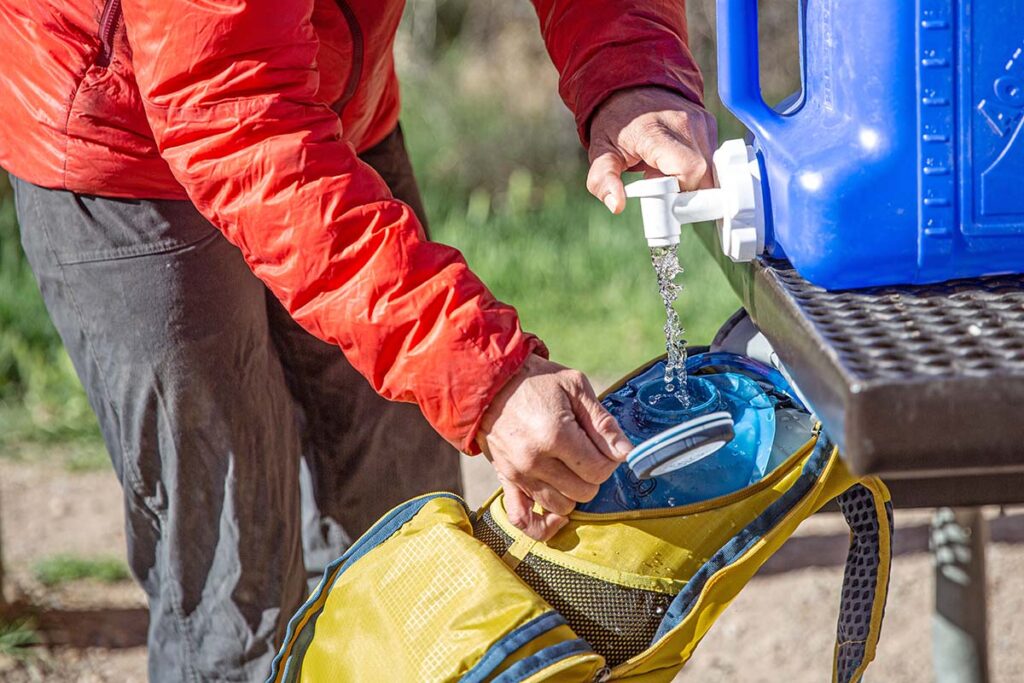
Top Hydration Pack Brands for Mold Resistance
When it comes to choosing a hydration pack that’s less susceptible to mold, certain brands stand out for their quality and design. These brands have developed packs with features that help reduce moisture retention, making them less likely to harbor mold.
- CamelBak: A leader in the hydration pack market, CamelBak offers packs with antimicrobial technology in their reservoirs and tubes. This technology inhibits the growth of bacteria and mold. Their Crux reservoirs, in particular, are designed for easy cleaning and drying.
- Osprey: Known for their innovative designs, Osprey hydration packs feature a Hydraulics™ LT Reservoir like in the Osprey Raptor/Raven series that is simple to maintain. The wide opening and smooth interior surface make it easier to clean and dry, reducing the likelihood of mold development.
- Platypus: Platypus is renowned for its hydration systems’ durability and ease of maintenance. Their Big Zip™ reservoirs have a wide opening and are made with antimicrobial materials, which help prevent mold and bacteria growth.
- Deuter: Deuter offers hydration packs with a Streamer hydration system, which includes a taste-free reservoir and tube. These are treated to inhibit bacterial and mold growth. The easy-to-clean design is a plus for maintaining hygiene.
- Hydrapak: Hydrapak’s hydration systems are known for their durability and ease of cleaning. The Shape-Shift Reservoir, for instance, has a full-length baffle that reduces the chance of mold buildup and is reversible for easy cleaning.
Each of these brands has put significant effort into designing hydration packs that are easier to clean and dry, helping to prevent the growth of mold. While no hydration pack is completely mold-proof, choosing a pack from these brands and following proper maintenance and cleaning routines can greatly reduce the risk of mold development. Remember, even the best hydration pack requires regular care to stay clean and safe for use.
Conclusion: A Stitch in Time Saves Nine
In conclusion, keeping your hydration pack mold-free is essential for any cyclist. Regular cleaning, thorough drying, and proper storage are your best bets for preventing mold growth. Remember, a little bit of maintenance goes a long way in ensuring that your hydration system is safe, hygienic, and ready for your next ride.
Stay hydrated, and stay mold-free!
John
FAQ
How often should you clean a hydration pack?
Ideally, you should clean your hydration pack after every use, especially if you’ve filled it with a liquid other than water, like a sports drink. For regular water use, a thorough cleaning every few uses is advisable.
How do you clean a hydro pack?
To clean a hydration pack, empty it and rinse with hot water. Use a mild soap or a specialized cleaning solution. Scrub the interior with a brush, rinse thoroughly, and hang it to dry completely. Clean the drinking tube and mouthpiece similarly, using a long brush.
How long can you keep water in a hydration pack?
It’s best to empty and dry your hydration pack within a day after use. Keeping water in it for longer can increase the risk of bacterial and mold growth.
How do you keep mold out of a hydration pack?
To prevent mold in a hydration pack, empty and dry it completely after each use. Clean regularly with a mild soap or specialized solution, and store it in a dry, ventilated area. Avoid leaving liquids in it for extended periods.

